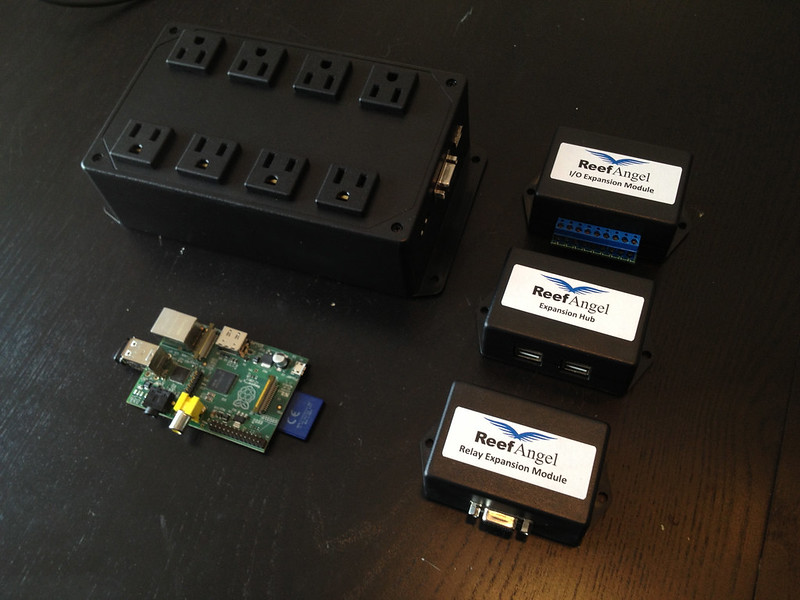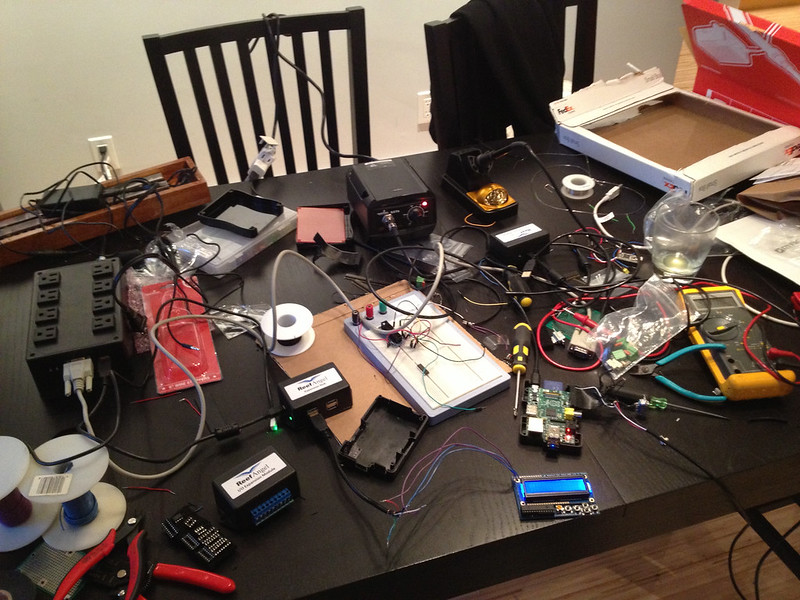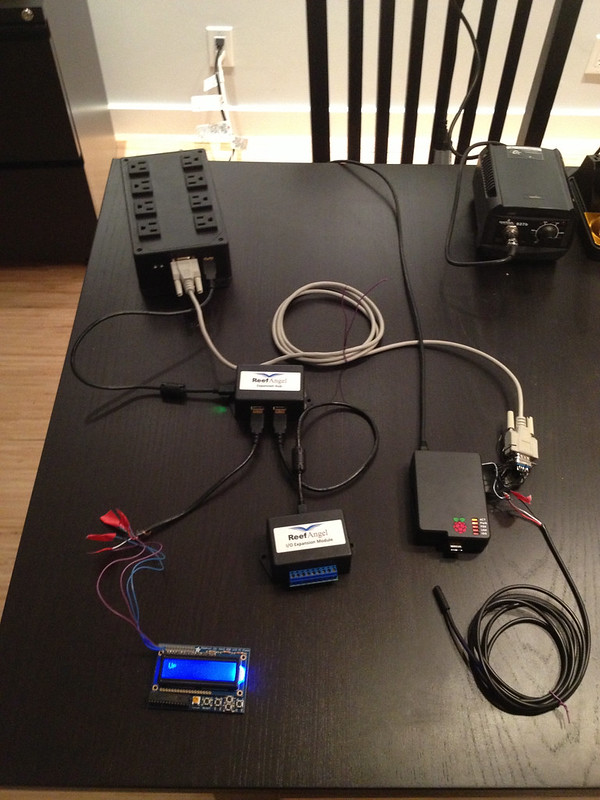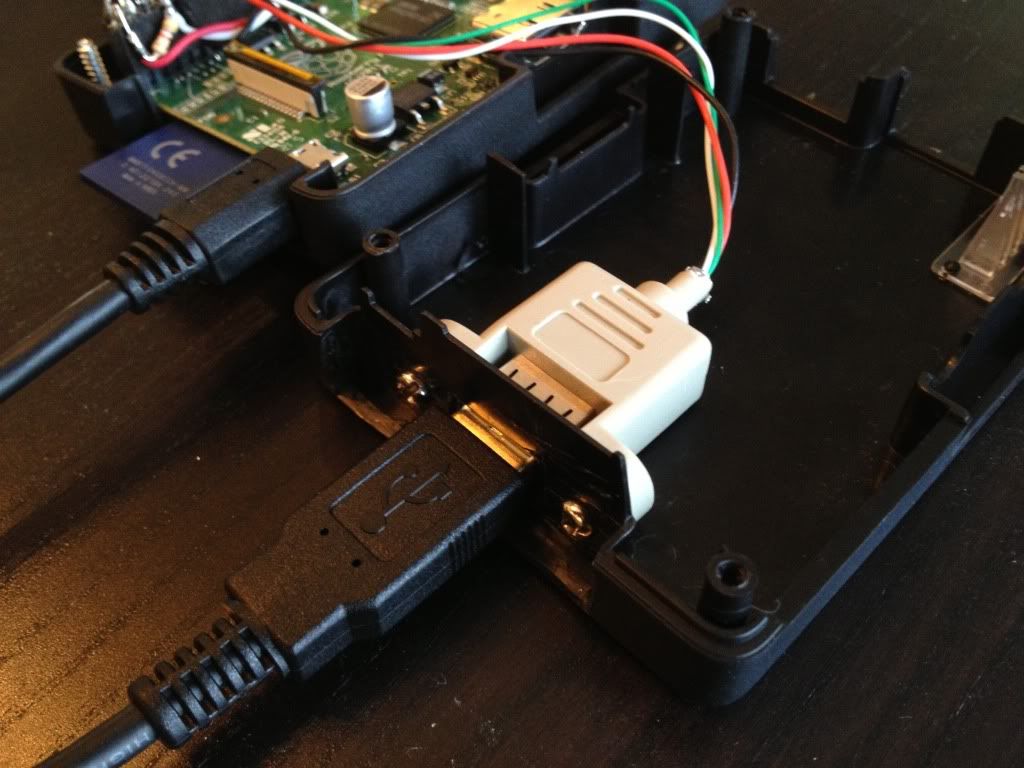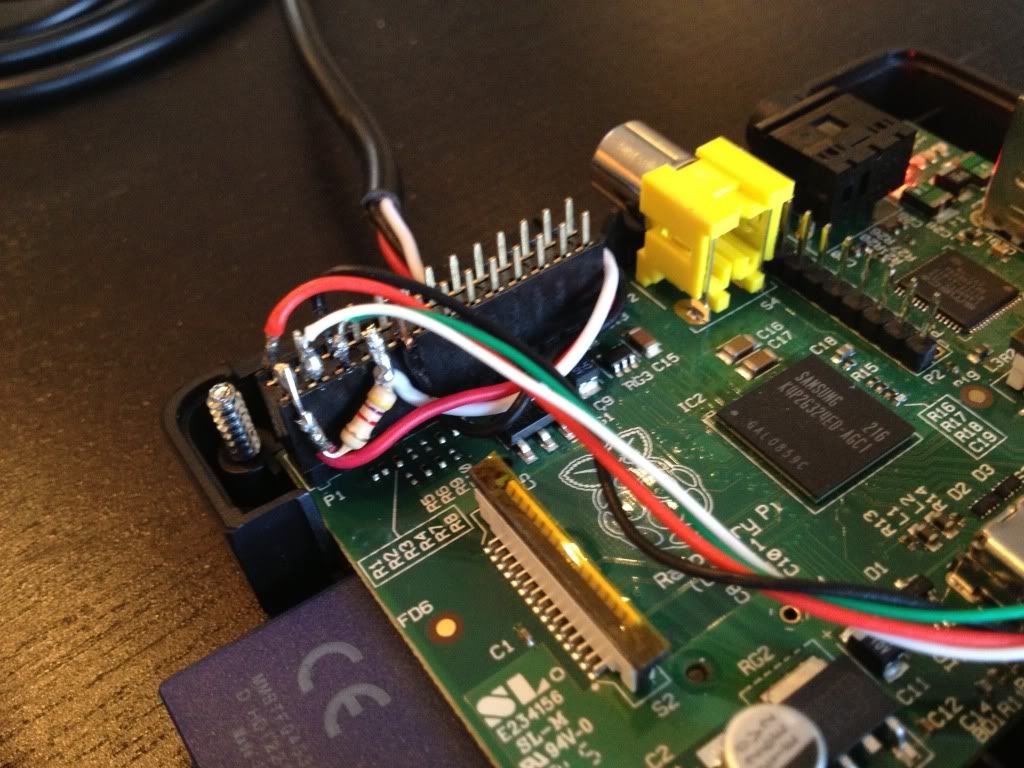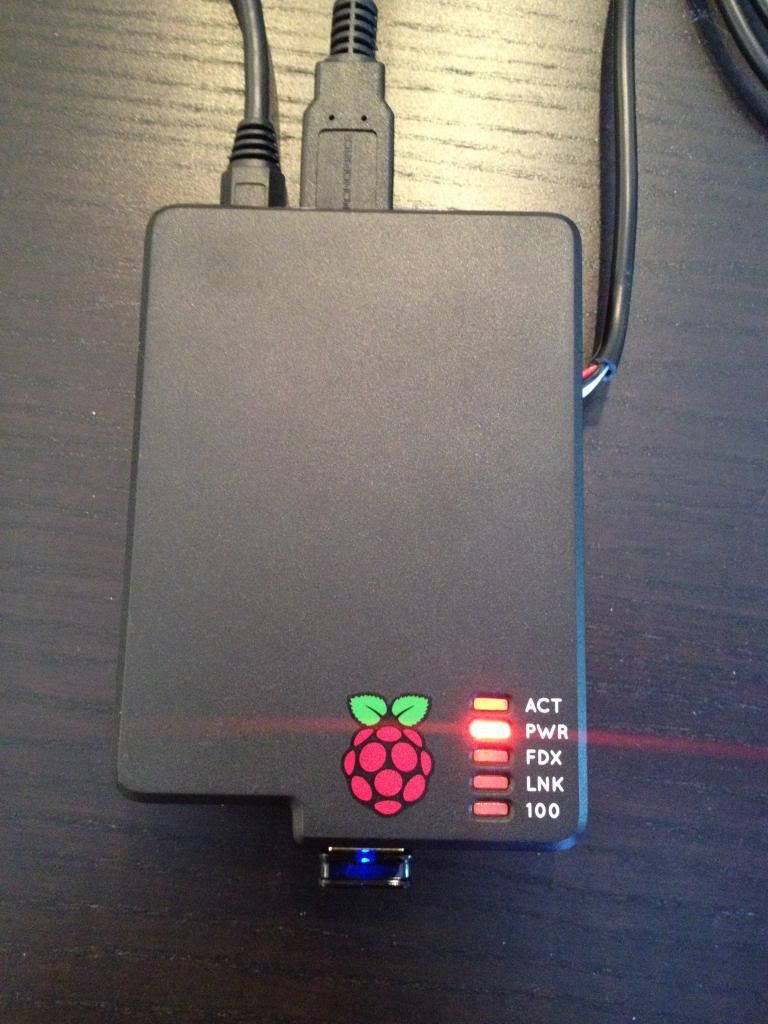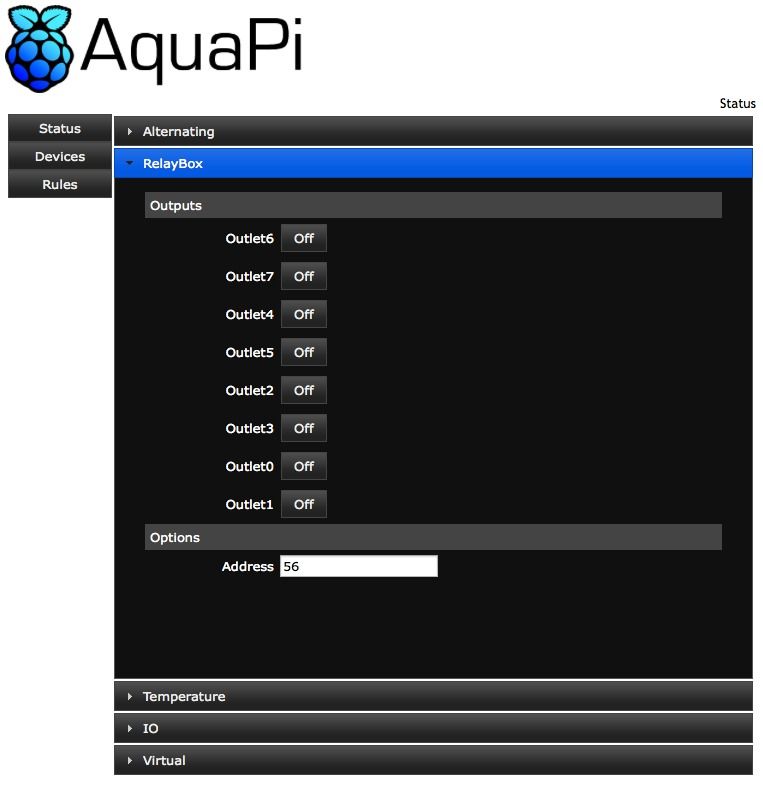Hey guys. I thought I'd share a project I've been working on. This is going to be super nerdy. Consider yourself warned. 
For a long time now I've thought it would be fun to build my own aquarium controller. I'm pretty sure I can get the software end working, and I have some experience with electronics, but building everything from scratch (especially analog stuff like pH probe inputs) and packaging it nicely was daunting enough that I never did it. Recently I took a look at the Reef Angel stuff and the openness of it seemed really awesome. All the source code is there, and even the schematics are published on the website.
I've also been wanting to do something with the Raspberry Pi. If you aren't familiar with it, the Raspberry Pi is a credit card sized single board compter. It has a 300Mhz CPU, 512MB of RAM, USB, Ethernet, a GPU, HDMI, and audio ... all for just $35. So, you probably see where I'm going here. I thought it would be fun to try hooking up the Pi to reef angel hardware. I spent some time studying the schematics and found that most of the reef angel hardware connects using an i2c bus. i2c is a very common standard in electronics for connecting all sorts of components. In fact, that raspberry pi has i2c built in and comes with linux drivers for it!
The reef angel hardware uses USB cables (mini connectors upstream and USB-A connectors downstream) but it's actually i2c rather than USB.
The second interesting feature of the reef angel is the connection between the relay box and the head unit. This is a DB-25 connector like you would use for an SVGA monitor. This cable caries i2c, but also includes wires to control each relay. I can drive the relays either using output pins on the pi, or by using i2c and the reef angel relay box expansion module.
Next up I'll post some photos showing where I'm at with it and what I'm doing on the software side. Big shout out to Roberto for making such awesome hardware and making it an open platform so nerds like me can tinker with it.
For a long time now I've thought it would be fun to build my own aquarium controller. I'm pretty sure I can get the software end working, and I have some experience with electronics, but building everything from scratch (especially analog stuff like pH probe inputs) and packaging it nicely was daunting enough that I never did it. Recently I took a look at the Reef Angel stuff and the openness of it seemed really awesome. All the source code is there, and even the schematics are published on the website.
I've also been wanting to do something with the Raspberry Pi. If you aren't familiar with it, the Raspberry Pi is a credit card sized single board compter. It has a 300Mhz CPU, 512MB of RAM, USB, Ethernet, a GPU, HDMI, and audio ... all for just $35. So, you probably see where I'm going here. I thought it would be fun to try hooking up the Pi to reef angel hardware. I spent some time studying the schematics and found that most of the reef angel hardware connects using an i2c bus. i2c is a very common standard in electronics for connecting all sorts of components. In fact, that raspberry pi has i2c built in and comes with linux drivers for it!
The reef angel hardware uses USB cables (mini connectors upstream and USB-A connectors downstream) but it's actually i2c rather than USB.
The second interesting feature of the reef angel is the connection between the relay box and the head unit. This is a DB-25 connector like you would use for an SVGA monitor. This cable caries i2c, but also includes wires to control each relay. I can drive the relays either using output pins on the pi, or by using i2c and the reef angel relay box expansion module.
Next up I'll post some photos showing where I'm at with it and what I'm doing on the software side. Big shout out to Roberto for making such awesome hardware and making it an open platform so nerds like me can tinker with it.

